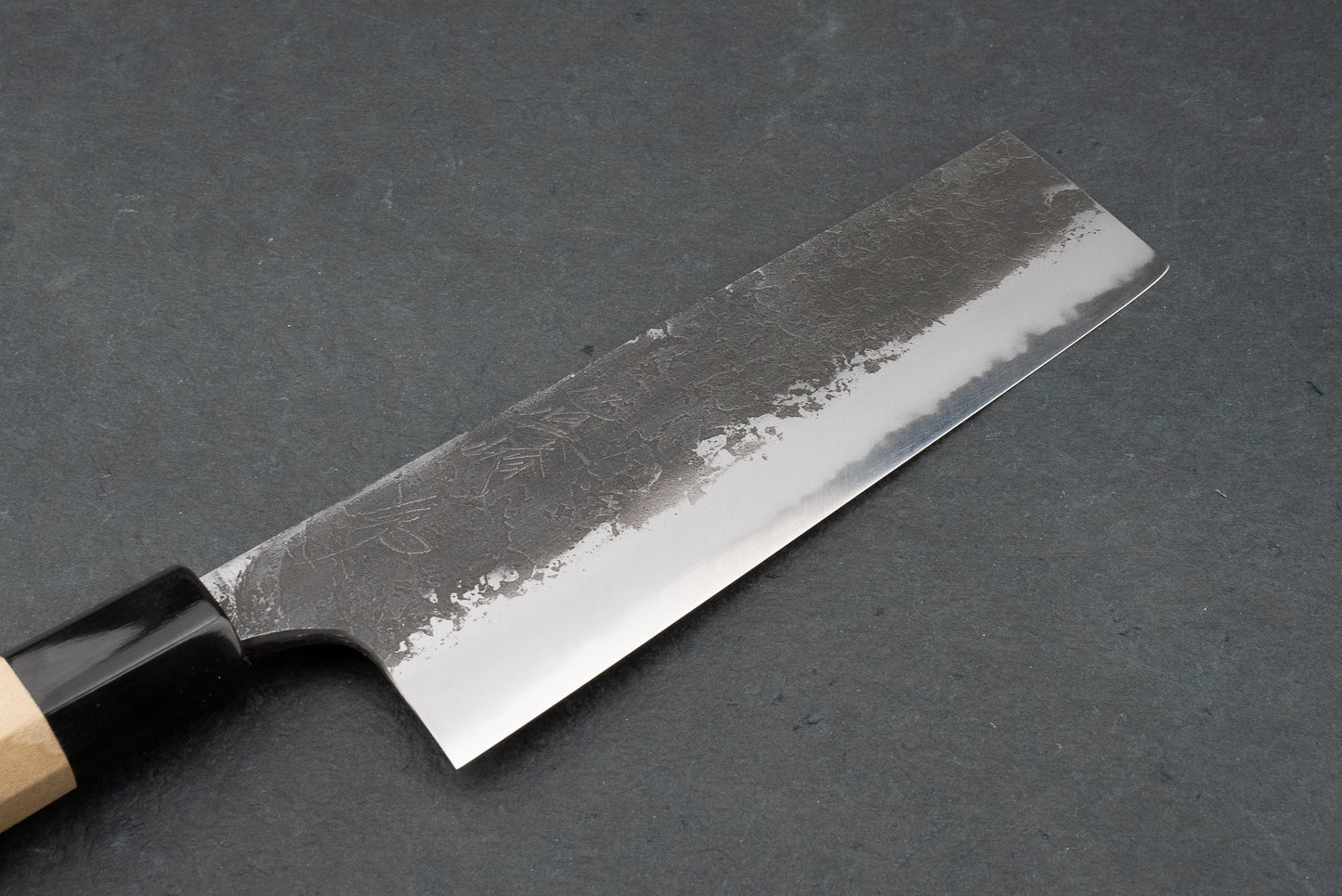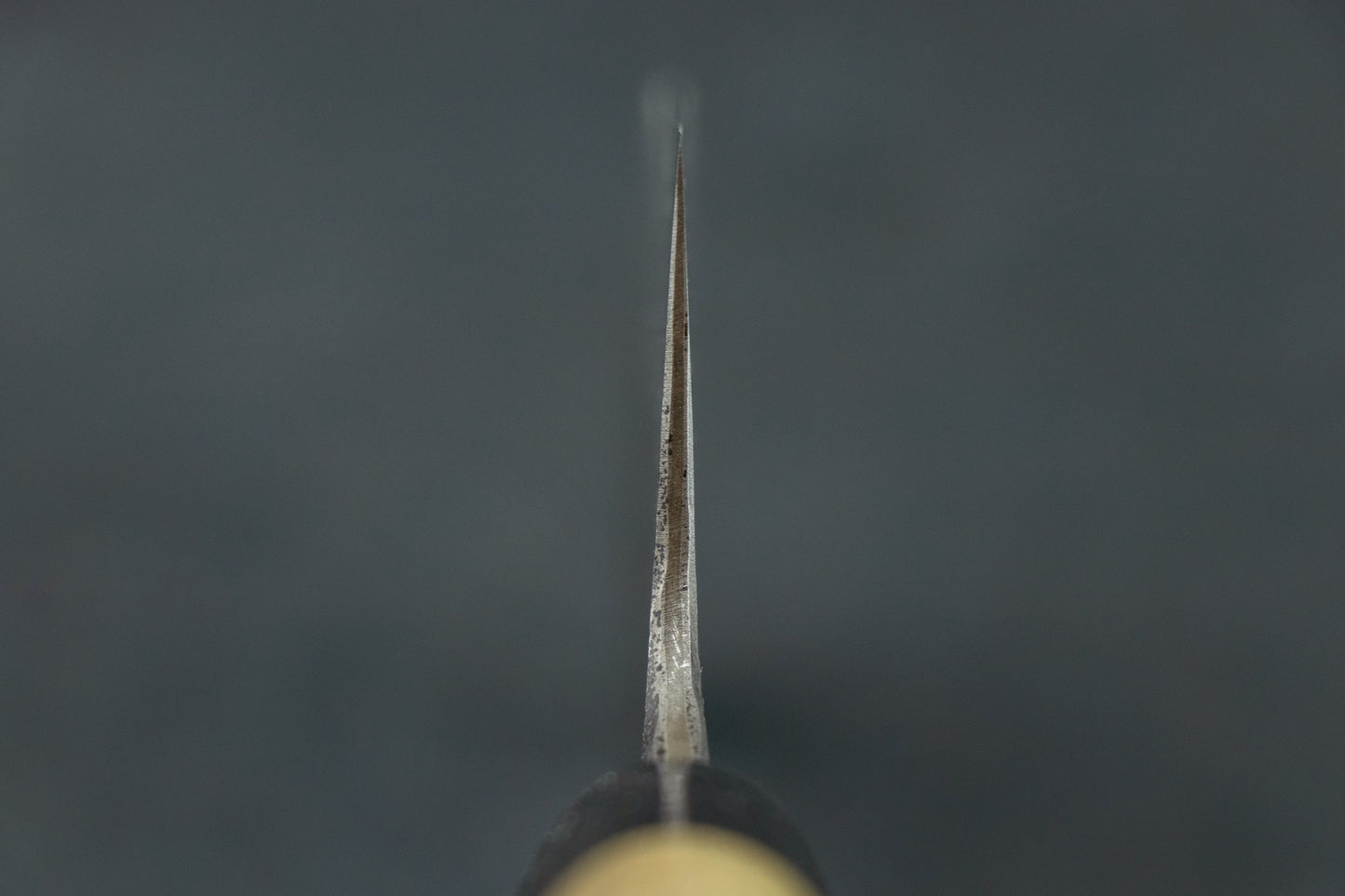Mazaki Shirogami Nashiji Kurouchi Nakiri 165mm
Mazaki Shirogami Nashiji Kurouchi Nakiri 165mm
Couldn't load pickup availability
About Mazaki San -
Though a relatively young knifemaker, Naoki Mazaki works hard to preserve traditional ways of crafting blades.
In 2017, after years of training and preparation, Mazaki-san finally opened his own workshop. He now forge-welds all of his carbon steel knives in-house and finishes his bevel with a variety of different whetstones, all by hand. His care and attention to detail are immediately evident when you handle one of his knives: while rustic in appearance, each one has been lovingly polished and perfected. Once you put them to work, his passion and skill come through even more.
Mazaki san prefers to work with the more traditional Shirogami #2 to craft his knives and often leaves the rough, burned ‘kurouchi’ finish from the forge. Not just used for tradition’s sake, Shirogami is capable of insane sharpness and edge retention. It’s easily one of my favourite knife steels; it cuts beautifully, but it also changes with time, building a patina totally unique to you and the food you cook.
About the shape - Under utilized in the western kitchen, the nakiri’s flat blade is meant for the push/pull chopping of vegetables. Since the entire flat edge of the knife touches the cutting board at once, you won't be turning the vegetable into an 'accordion', still connected like a paper doll after you've cut them. The added weight of the blade allows it to fall through food more easily while you chop, so the knife does more of the work for you!
| Shape | |
|---|---|
| Blade Length | | |
| Blade Height | |
| Blade Thickness Above Heel | |
| Weight | |
| Steel Type |
Rust Prone ⓘ
This knife can rust, click to learn more.
|
| Rockwell Hardness | 62 - 63 |
| Edge/Bevel | |
| Handle | Wa (Japanese) Handle - Octagon Magnolia Water Buffalo Horn Collar |
| Made in |
Knife Care
Knife Care
Shipping and Returns
Shipping and Returns
We aim to ship your order within 1 business day at Knifewear, if there is a hold up, we'll aim to let you know and give you a timeline.
We offer $3 shipping on orders over $100* anywhere in Canada and $200* to customers in the USA. We ship worldwide, and offer up to the minute rates from our shipping partner DHL.
*Konro Grills and some other larger items are excluded from the free shipping offer.
How do I make a return on an online order?
No worries, we've got you sorted. Head over to https://knifewear.com/returns and follow the prompts.
Can I pick up my order Curbside / At the store?
Absolutely, as long as all the items you are looking for are in stock at the location you want to pickup from, you'll be able to select that at the checkout. If one or more items aren't at your preferred location we are happy to ship it to you.
Request Additional Info
Request Additional Info






